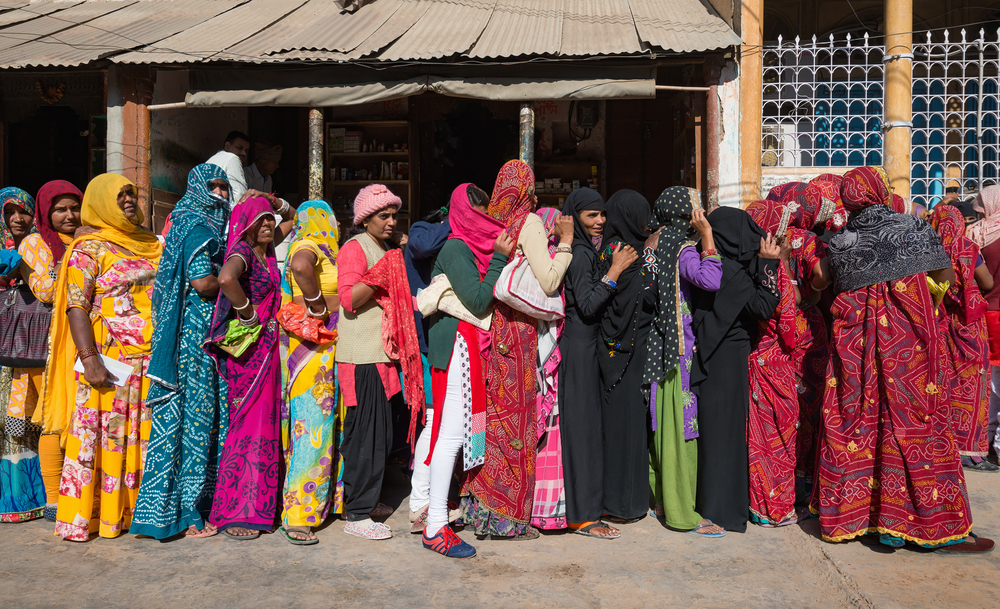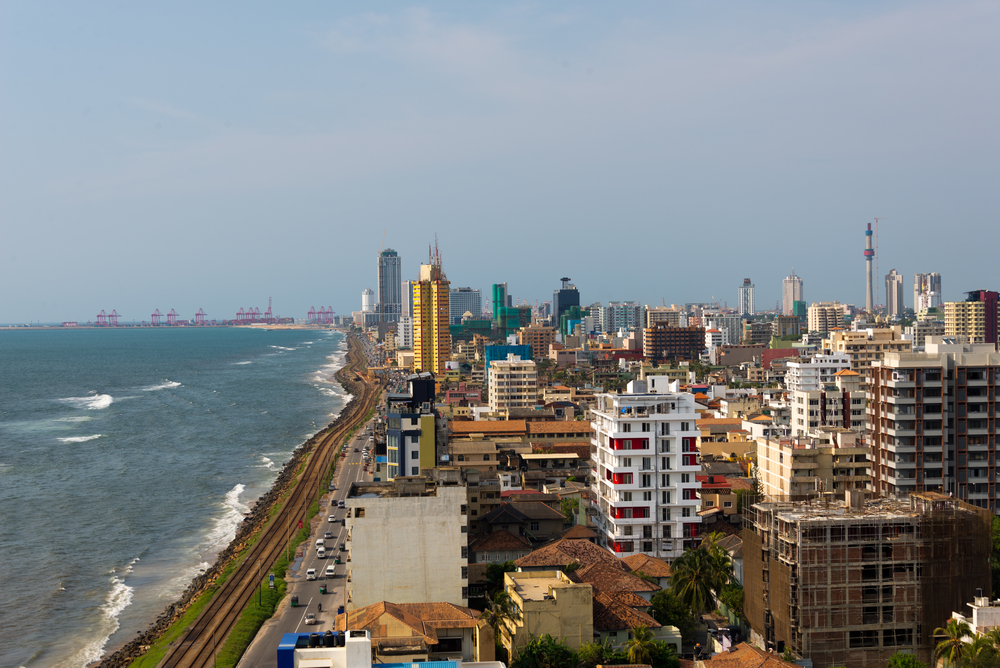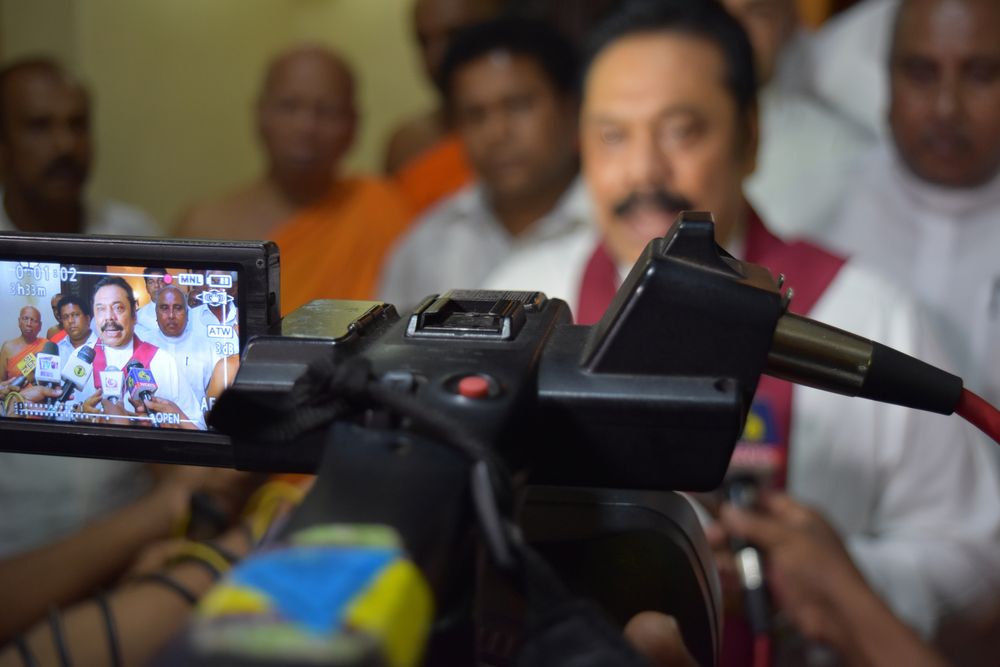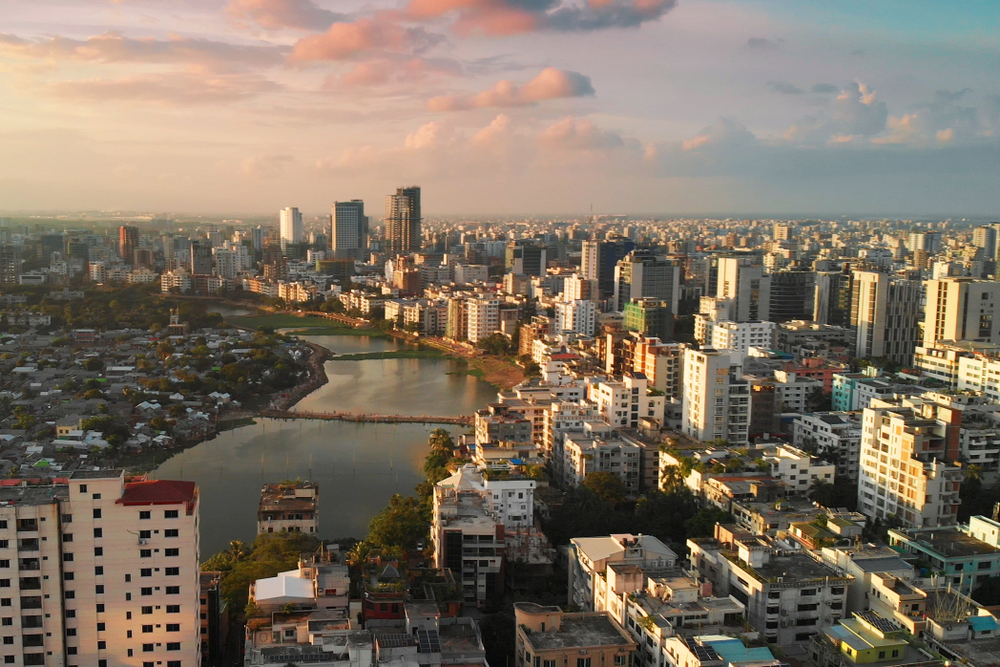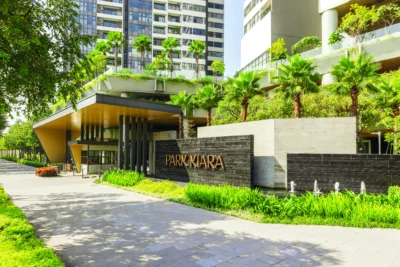South Asian nations cautiously optimistic amid post-pandemic recovery
Competing factors ranging from political instability to ill-fated reforms may have adversely affected property markets. But the various nations of South Asia all have cause for cautious optimism as the post-pandemic world moves into view
India
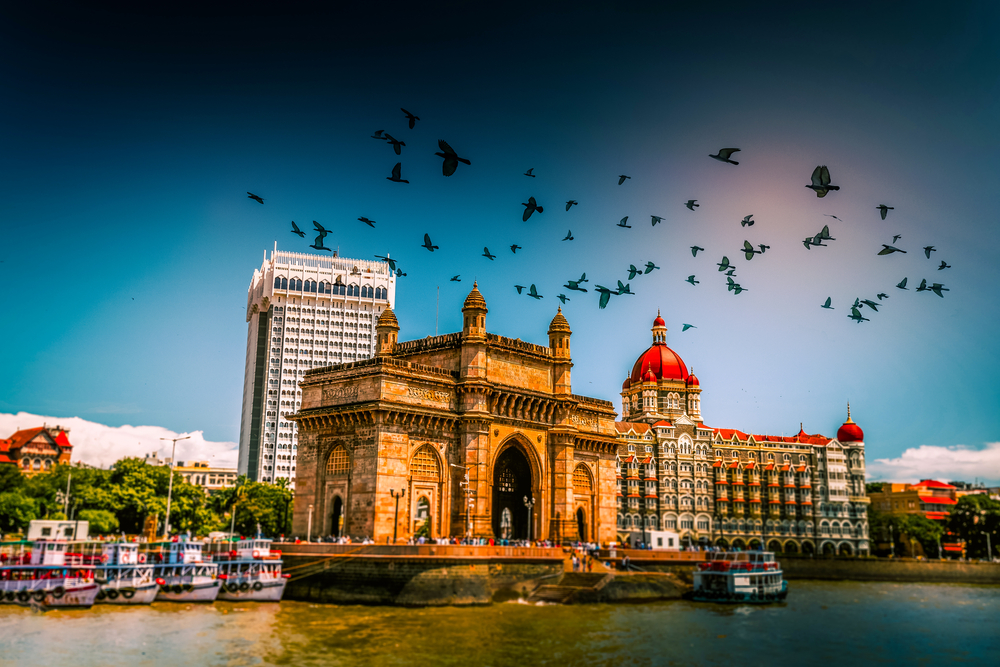
The Palais Royale in Mumbai’s waterfront Worli district was supposed to be India’s most exclusive address. The sky-high retreat for the nation’s elite, with its six-figure units, multiple swimming pools, cinema, and a cricket pitch, symbolised India’s boom times.
A decade on, however, the unfinished 320-metre high project has become an eyesore—an omnipresent reminder that India’s real estate woes came long before the 2020 pandemic hit. The culprit: a move towards demonetisation led by prime minister Narendra Modi in November 2016.
Rocking the property sector, Modi’s failed attempt at formalising the economy decapitated construction and sales, with some developers defaulting on large-scale projects. This was followed by the Real Estate Regulation and Development Act (RERA) and the Goods and Services Tax (GST).
The former may have provided a much-needed regulatory body, but by restricting movement of finances between projects—coupled with the 11% GST on under-construction projects—RERA caused serious cashflow issues and soaring project costs for developers.
The biggest blow to the industry was the 2018 non-banking financial company (NBFC) crisis when the Reserve Bank of India clamped down on loans to developers from traditional financial institutions, leading to the rise of shadow banks.
These NBFCs, including Palais Royale’s financier Indiabulls Housing Finance, soon became the largest source of funding for property developers. Crippling the sector further was when industry behemoth IL&FS defaulted on debt, forcing the government to intervene in a move labelled India’s “Lehman moment”.
“Investor participation in the market had already been practically wiped out, causing a massive mismatch of supply and demand,” says Amit Khanna, CEO of asset management company InterGlobe Real Estate Ventures. “With NBFC borrowing obliterated from the market, real estate players were left with no option but to rely on equity to complete projects, rendering most unviable.”
India’s GDP growth had already slowed to an 11-year low in 2019-20 when government enforced one of the most stringent Covid-19-induced lockdown measures globally. The IMF in June forecasted a 4.5% drop in 2021—the economy’s first contraction in 40 years. Property was inevitably hit hard: Knight Frank India’s H1 2020 report notes residential sales across the top eight property markets plummeted 54% year-on-year in the first six months to 59,538 transactions.
But there are silver linings for India, post-pandemic. For such a vast market, Indian real estate remains notoriously un-digitalised, but with diminishing transactions and almost no site visits since the lockdown started, property firms have been embracing proptech. Some online property firms like Square Yards, which went fully digital in April 2020, reportedly recorded an uptick in transactions.
With the festival months in full swing—typically the most active time of the year for property investment—and with india’s relatively good management of the pandemic instilling confidence, a cautious sense of optimism is emerging
“We used present market conditions to push our digital solutions for the sector, along with structured products with India’s largest developers,” says CEO and founder Tanuj Shori. “We launched a digital platform that automates the complete property transaction value chain—from pre-sales, with online virtual tours and 3D walkthroughs, through to a post-sales module for submission of online applications with digital signatures.”
Companies implementing work-from-home policies is another game-changer. If the teleworking culture persists post-pandemic, the office space market will be forced to adapt. “We are seeing many companies either reducing their space requirements or relocating to more spaced-out office layouts,” says Ajai A Kapoor, founder of real estate service company 360 Degrees, adding that developers now incorporate home offices into apartment layouts and promote onsite meeting rooms as among the amenities within larger projects.
With the festival months in full swing—typically the most active time of the year for property investment—and with India’s relatively good management of the pandemic instilling confidence, a cautious sense of optimism is emerging. Even Palais Royale, which after a decade of financial and building violation allegations, is under new ownership and could finally open next year. In a tumultuous era, much can go wrong. But, given the portents, it currently looks like India’s property market may have weathered yet another storm.
Sri Lanka
When travel tastemaker Lonely Planet named Sri Lanka 2019’s top country in the world to visit, it seemed the pint-sized island nation’s time in the sun had finally arrived. After a decade of reflection and reconstruction, following more than 25 years of brutal civil war, the country was not only on the bucket list of travellers but property investors, too.
A slew of developers surfed the post-war economic wave and, off the back of burgeoning tourism, bet big on an influx of overseas investment into the luxury residential market.
But the bright outlook soon faded. A constitutional crisis in October 2018 staggered the economy, while the Easter Sunday bombings in Colombo, which killed 250 people, brought the nation to a complete standstill. The country quietly retreated, tourism ebbed, and the projected real estate investment never arrived.
The terrorist attack was an all too familiar reminder of the fractures within Sri Lankan society—fractures the Sri Lanka Podujana Peramuna party, the controversial yet popular Rajapaksa clan’s latest political vehicle, manipulated and politicised in the run-up to the November presidential election that Gotabaya Rajapaksa subsequently won.
The previous Wickremasinghe administration was not without its faults. Deemed dysfunctional and unpopular amongst the business community, it failed to maintain the pro-investment environment of previous years and effectively implement anti-corruption measures—the platform on which it rode to power in 2015.
“There was a collective sigh of relief from the business community after the November election,” says Roshan Madawela, founder of Research Intelligence Unit (Sri Lanka). “It signalled a clear way forward for macroeconomic policy.”
Indeed, prior to the Covid-19 outbreak, the segment was welcoming some green shoots largely due to the introduction of favourable investment policies by the new administration. These included the reduction of 15% VAT on condominiums to 6% and tax exemption for apartments below LKR25m. The high-end market also recorded absorption rates of about 50% at the start of 2020, which “even in the face of recent adversity was encouraging by regional standards,” says Madawela.
Still, the knock-on effects of Covid-19 on the property market are inescapable. Although Sri Lanka has responded effectively to the pandemic—recording only 11 deaths as of press time—developers and constructions companies struggle with rising costs, cash flow, and significant delays to launches and handovers. Some are even offering discounted rates of around 5% to expedite transactions and reinforce cash flows, reports Nirmal De Silva, co-founder and CEO of Paramount Realty.
One project that has continued apace throughout the pandemic, however, is the Chinese-funded $1.4bn Port City Colombo. Set to house an estimated 80,000 residents, in addition to a financial district, hospitals, hotels, and even a theme park, the 665-acre mega-development will “ramp up” under the Sri Lanka Podujana Peramuna regime. De Silva believes it will ignite interest from foreign investors, not just from China, but India and Europe, too.
If COVID continues to be managed and tourism returns, Sri Lanka will emerge as a very attractive proposition despite the multifarious economic challenges that the government will have to face
Stronger incentives, however, are necessary for overseas investment to really take hold. “One of the factors behind oversupply in the top-tier market was the lack of enticement for foreign investment,” says De Silva. “But the government is now proposing a five-year residence visa for investments, which will definitely drive demand over the next few years, as well as the anticipated reduction in interest rates.”
In the meantime, analysts agree it will take at least 12 months for the market to regain any momentum. But with the Rajapaksa family recently consolidating its grip on power in August’s parliamentary election and their effective handling of the pandemic, it looks like the optimism of 2018 is slowly returning.
“If COVID continues to be managed and tourism returns, Sri Lanka will emerge as a very attractive proposition despite the multifarious economic challenges that the government will have to face,” forecasts Madawela.
Bangladesh
Few would disagree with the Economist Intelligence Unit’s decision to name Syria’s war-torn capital Damascus the world’s least liveable city in 2019. Only two spots above, however, sits Dhaka. The Bangladesh capital is one of the world’s most densely populated cities, with a population of more than 20 million, and regularly records some of the worst air pollution on the planet. There are—to the uninitiated, at least—few redeeming features.
Yet Bangladesh remains second only to Bhutan as South Asia’s fastest-growing economy, recording average GDP growth of 6.5% in the past decade, according to the World Bank. It also offers one of the most liberal foreign direct investment regimes in the region. Contradictions and extremes such as these also define Dhaka’s residential market.
The northern neighbourhoods of Gulshan, Banani and Baridhara, known as the “green zone”, are home to new residential developments that would not look out of place in Singapore, while the central district of Dhanmondi is more culturally vibrant, with art galleries and international restaurants. In these prime districts, properties cost as much as $3m, according to local agency Gemcom.
The Maldives
There has been much talk during the pandemic of escaping to isolation destinations, boltholes far removed from the soul-crushing news cycles of 2020. The reality of the modern world, however, means such locations are increasingly rare to come by—unless a private island is within budget. Those with shorter pockets, meanwhile, could turn to the Maldives as a remote alternative.
Home to more than 1,000 desert islands and 980 kilometres from the nearest landmass, the Indian Ocean archipelago offers a limited number of leasehold options for homeowners. These include full-service villas at Soneva Jani in the Noonu Atoll, which start from $3m, and ownership schemes at Banyan Tree Vabbinfaru. More affordable condominium options exist in the country’s capital, Malé, but the market remains relatively nascent, according to Nirmal De Silva, co-founder and CEO of Paramount Realty.
“Due to its popularity as a high-end tourism destination, there has always been a belief that there will be an increase in demand for residential units,” he says. “But there’s no proper structure to allow the inflow of foreign investment, so developers continue to focus on the local market.“I can’t see this changing in the next few years.”
Pakistan
2020 was supposed to be the year that Pakistan’s property market brushed itself down and blossomed after years in the doldrums. Buoyed by a boom in inbound tourism in 2019, an improving business environment demonstrated by a 30-place leap in World Bank’s Doing Business 2020 ranking, and rising demand for high-end properties in the key markets of Lahore, Faisalabad, Multan and Karachi, hope was on the horizon for the country’s real estate industry prior to the Covid-19 outbreak.
Unlike regional counterparts India and Sri Lanka, however, Pakistan’s response to the pandemic has been sluggish. As such, the economy is expected to shrink by $15bn in 2020, with the real estate sector expected to suffer more than most.
A sharp decline in remittances from the country’s diaspora has also hit the market hard this year. According to Mohammad Hassan Bakhshi, former chairman of the Association of Builders and Developers, overseas Pakistanis on average invested $10 billion in the property market in recent years. But with the economic downturn expected to continue long into 2021 and ongoing issues surrounding banking transaction regulations and excessive property transfer taxes unlikely to be resolved soon, there are concerns that the diaspora may choose to invest elsewhere in the future.
This article originally appeared in Issue No. 162 of PropertyGuru Property Report Magazine
Recommended
Park Kiara in Hanoi raises the bar for sustainable urban living
Park Kiara in Hanoi is a repudiation of low-density, car-dependent suburban sprawl
6 reasons Bekasi is rising as Greater Jakarta’s next hotspot
One of Greater Jakarta’s rising stars is prospering, thanks to ample recreation and a contingent of desirable housing projects
6 developments driving Asia’s green real estate shift
Developers are being incentivised to push a green agenda into daring new realms
The Philippines’ LIMA Estate drives sustainable industrial growth
LIMA Estate models a citywide vision that uplifts workers while appealing to climate-conscious employers

